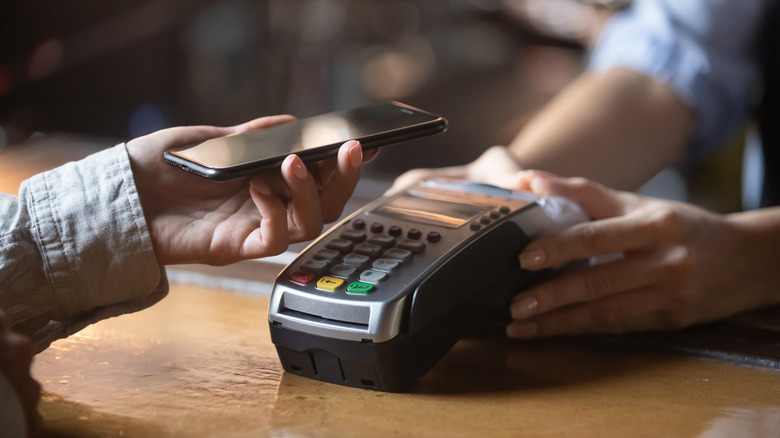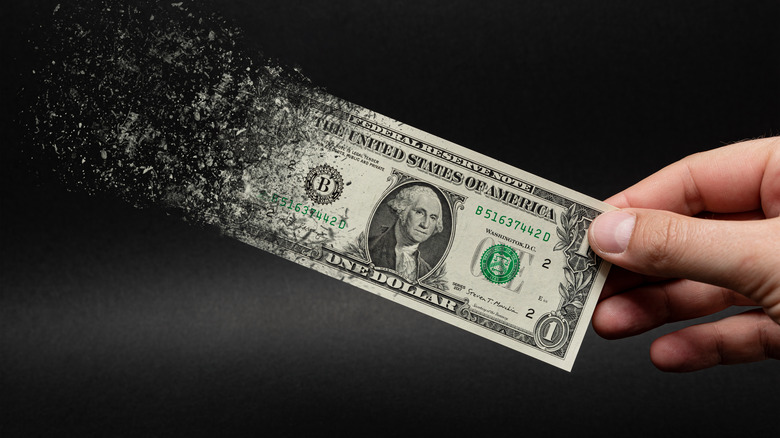Why Restaurant Prices Are Going To Increase In 2022
This year's food costs have seen unprecedented increases, according to a recent Consumer Price Index Summary shared by the Bureau of Labor Statistics. The government report reads that the all items index, which refers to the cost of goods and services overall, rose 6.8% between November of 2020 and November of this year, which is the largest 12-month cost increase since 1982. More specifically, the food index increased by 6.1%, with the increases being similar for buying groceries and dining out: paying for food to eat at home has become 6.4% more expensive, while food away from home has gotten 5.8% more costly. What does this mean for consumers?
While preparing food at home is always a good way to keep costs under control, these numbers show that prices are growing noticeably higher whether you're staying in or eating at restaurants. With that being said, certain food categories have had larger price increases over the last 12 months than others, such as beef (up 24%), bacon (up 20%), and eggs (up 12%), according to Visual Capitalist. This is felt by restaurant owners as well as customers. Sara Lund, owner of Bodega and The Rest in Utah, told PBS that while higher menu prices can help, they can't always be a solution to escalating food costs. "The margins on food are never going to be astronomical, even in good times, but paying 40% more for protein? I can't pass that along to the customer." Over the coming months, will these elevated restaurant prices continue?
Restaurant prices are expected to continue to increase
The National Restaurant Association conducted a survey and found that 95% of restaurants have experienced "significant supply delays or shortages of key food items in recent months," and 75% have changed their menus (by increasing prices or by other means) in response (via QSR). In the last quarter of this year, menu prices at The Cheesecake Factory rose 3% — and they may rise another 2% next year — while Wingstop franchisees may increase menu prices by up to 5% due to higher costs of ingredients and packaging. "The entire industry is feeling it. And the biggest problem is no one has given us, especially from the leadership of our country, any indication that this is going to come to an end," Fazoli's CEO Carl Howard told QSR.
According to findings by Deloitte, after the SARS epidemic in China, demand for products such as yogurt and disinfectants remained high for more than 24 months post-crisis. If the same proves true following COVID-19, we may be able to expect prices of some goods and services to remain elevated for quite some time. However, following the release of the Consumer Price Index Summary, President Joe Biden did his best to calm Americans' fears about inflation in a recent address, sharing, "Developments in the weeks after these data were collected last month show that price and cost increase are slowing, although not as quickly as we'd like," adding that getting prices lowered is a "top goal" of his administration (via The White House).

